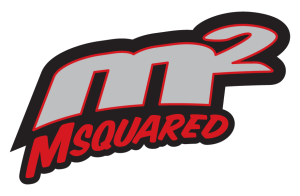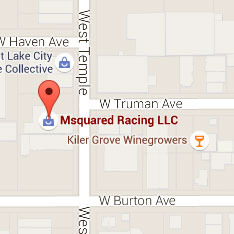Karting. The Ultimate Motorsports Experience
Karting provides a natural first step in the pursuit of a professional racing career, or for the vast majority, a great opportunity to drive and race high-performance vehicles at a relatively low cost. It is also a great family activity allowing Mom, Dad and the kids to spend quality time together in a great atmosphere. Getting started in karting can feel confusing and overwhelming, especially if you are new to motorsports. The information below will help explain the types of karts available and give you the opportunity to determine where you or your child might want to get started.
Ages:
First off, let’s dispel the myth that karts are only for kids, that couldn’t be less true. Classes exist for kids as young as 5 years old (called Kid Karts or Baby Karts), to bigger kids some of which race well into their 70s.
Types of Kart Racing:
Kart racing can be roughly separated into two categories; Sprint racing and Road racing. Sprint racing takes place on a “kart track” which is essentially a scaled down road course (includes both left and right turns). Road racing takes place on full sized car tracks and features higher top speeds and specialized equipment. Sprint racing is the more popular of the two with kart tracks in nearly every major metropolitan area. For the purposes of this article, we will focus on Sprint racing.
Sprint racing itself can be roughly separated into three tiers: Local or “club” racing, regional racing and national racing. The cost and competition level naturally increases with every step. Club racing is the heart of kart racing, this takes place at a single facility over the course of a season with local area drivers and families vying for the season points championship in their class. Local club racing in Utah is covered more in-depth here. Regional racing typically takes place at two or three different tracks within a given geographical area with competitors from multiple states taking part, while national racing takes place all around the country with competitors from around the world.
The Karts:
Chassis: Kart racing chassis come in three basic sizes depending upon the age of the driver. “Baby” or “Kid” karts are for drivers ages 5-8 years old. The next size up is called a “Cadet” kart for those ages 8-11 years old. After that it’s on to a standard full sized kart which is for drivers 12 and up. Full sized kart chassis from a given manufacturer are offered in different models to meet the requirements for different classes so it’s important to work with someone knowledgeable to insure you get the proper model chassis for the class you intend to race.
Engines: Racing karts can be powered by 4-stroke and 2-stroke engines. For the newcomer, it’s not critical to understand the technical differences between the two. Typically, the 4-stroke classes are considered entry-level while the 2-stroke classes are for those with a bit more experience and technical/mechanical ability.
- 4-stroke karts and classes provide the easiest access point into karting as they are less expensive and easier to maintain. Briggs & Stratton and Honda are the two major manufacturers of 4-stroke karting engines. These motors are essentially what you would find on your lawnmower or snowblower but tuned and modified a bit for racing. Top speeds on a kart track will reach 40-60mph depending upon the class. There are 4-stroke classes for those ages 8-11 (Junior 1), 12-15 (Junior 2), 16 and up (Senior) and 30 and over (Masters). In the Junior classes the engines are restricted to reduce top speeds.
- 2-stroke engine classes require a bit more tuning and maintenance but provide a higher level of performance. They are also more expensive to purchase. 2-stroke classes can roughly be divided into two types: Touch and Go (TaG) classes and Shifter classes. The difference being TaG classes are single speed with an onboard electric starter while Shifter classes utilize engines with a six-speed transmission. TaG classes exist for drivers 8-11, 12-15, 16 and up and 30 and over. The two major 2-stroke TaG engines in the U.S. are Rotax Max and IAME. Top speeds range from 60-80mph depending upon the class and track. Shifter karts in the U.S. utilize a Honda CR125 engine with very limited modifications. This category is known as “Stock Moto” or “Spec Honda”. Top speeds range from 70-100mph and a driver must be 12 years old before a class is available.
Expense: One of the most common questions asked about karting is, “How much does it cost?” There really isn’t a simple answer to that question other than, it can cost as much or as little as you make it. A budget-conscious person can pick up a used 4-cycle kart and race a full season for less money than it takes to play golf for a year. On the other hand, a national driver in Rotax, IAME or Shifter Karts can spend astronomical amounts.
How to get started:
If you are interested in getting into karting, you’ve already taken the first step, you found this article! From here there are several things you can do: Go try out some rental karts. Wherever you live, chances are there’s a rental kart (indoor or outdoor) track near you where you can go drive with your friends and family. If you like it, then multiply that experience by ten and you’ll get an idea of what kart racing is like. Or, go check out a local race, breathe in the atmosphere, see what classes look interesting, talk to some of the people taking part. After one visit, you’ll have a pretty good idea if it’s something you want to get involved in. Finally, find someone knowledgeable to help you get started. There are a lot of things that need to be taken care of before you race beyond just buying a kart. You’ll need safety equipment and a few other tidbits and a good shop will walk you through the process.
If you have any questions feel free to give us a call at 801-972-4631 or drop us an email via our contact page.

